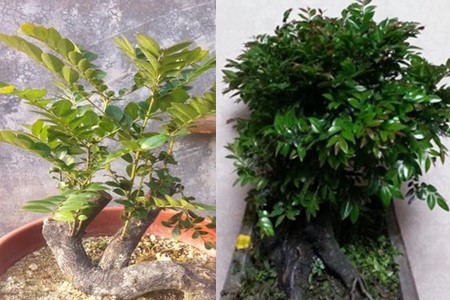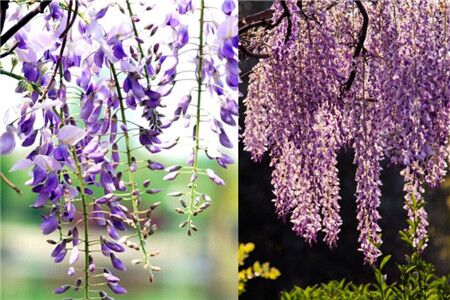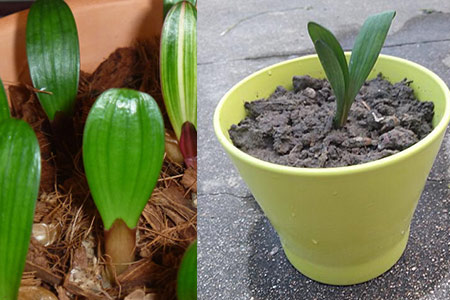A few tips for raising red sandalwood bonsai in the sun

There are many kinds of plants. Today we mainly talk about lobular red sandalwood. The plant belongs to a butterfly family, it belongs to a kind of red sandalwood, but also one of the fine red sandalwood. Because of its high density and stable wood, this kind of plant is loved by most people. And this kind of plant also has a very good ornamental value, so many people will also like to raise this kind of plant at home.
For many beginners, they may not know how to maintain the plant, nor do they know whether it is feasible for lobular red sandalwood bonsai to bask in the sun. If you want to plant successfully, how can you miss the next practical information?
Can I bask in the sun with lobular red sandalwood bonsai
Because the lobular red sandalwood plant is a kind of plant that likes to grow in the sun, it can be maintained on the balcony so that it can get enough sunlight supply. So usually in the cultivation of lobular red sandalwood, you can take out its bonsai to bask in the sun.
Second, how to cultivate lobular red sandalwood
1. Temperature
As the lobular red sandalwood is a kind of sun-loving plant, it is not resistant to low temperature, so the suitable temperature for its growth is between 20 and 30 degrees. If the temperature is below 3 degrees, it is easy to cause freezing damage to the plant. So usually when planting this kind of plant, you should put it on the sunny balcony or sunny place to ensure enough light.
2. Soil
Because the lobular red sandalwood itself has well-developed roots and nodules and has the role of nitrogen fixation, so the requirement of the plant for the soil is not very high.
3. Watering
Lobular red sandalwood is a tropical plant, which is not tolerant to drought and has high requirements for water. Generally every two or three days to water once, remember that watering can not be carried out at noon, otherwise it will easily lead to lobular red sandalwood plants in the case of high temperature water vapor evaporation phenomenon. Over a long period of time, it will cause the plant to wither and die. And when watering, it should also be watered thoroughly, not only to wet the surface of the soil, but also to spray water to the leaves frequently.
4. Fertilization
Usually when planting this kind of plant, although it does not need to be fertilized often, it is usually about 1-2 months to spray some plant nutrient droplets. When the growth of the plant is stable, its roots will also go deep into the soil, and if a large area of soil is moved, it will damage the plant's roots. So don't forget to bury some nutritious soil in the soil when fertilizing potted plants at ordinary times, and this can also prevent the soil from being too fertile and lead to root burning.
III. Matters needing attention in the maintenance of lobular red sandalwood bonsai
1. Fixed placement
Because the lobular red sandalwood bonsai has the ability to adapt to the environment, when it adapts to the surrounding growth environment, do not move the bonsai at will, otherwise it will lead to the burden of the growth of lobular red sandalwood bonsai.
2. Pest control
Anthracnose and black nevus, two very common diseases and insect pests, are easy to occur in the seedling stage of plant growth, so you can spray Bordeaux solution of 1RU 100 or 50% carbendazim for control. If there are golden flower insects, beetles and other leaf-eating pests, you can spray some trichlorfon.
Through the above detailed introduction, have you all mastered the correct planting method of lobular red sandalwood bonsai? If you want to plant successfully, then you must remember the above planting techniques and planting precautions!
How to raise a few key points of lobular red sandalwood bonsai to raise valuable potted plants
Red sandalwood is the first mahogany, lobular red sandalwood is the leader of red sandalwood, so it is of great value. Lobular red sandalwood is called a gift from heaven in Buddhist sutras, which has the function of detoxifying, repelling evil spirits and improving fengshui, so potted plants are not only used for ornamental purposes. As the saying goes, one inch of red sandalwood and one inch of gold, what are the skills of such a valuable plant culture? Let's talk about it in detail.
First, temperature requirements.
Lobular red sandalwood is a tropical plant from India, adapted to the temperature and climatic conditions of Southeast Asia, so like the sun, can not adapt to low temperature environment. The culture temperature of lobular red sandalwood is between 20 and 30 degrees Celsius, which is easy to freeze if it is lower than 3 degrees Celsius. Spring, summer and autumn can be raised in an outdoor environment, but they should be moderately shaded in summer and kept indoors in winter to avoid low temperatures.
In general, people like to put potted plants in the study or in the living room, where there is no direct sunlight, which is not suitable for the growth of plants that like the sun. Lobular red sandalwood in this environment for a long time will grow, the branches are getting longer and longer, the shape is not beautiful, because to put in a sunny position.
Second, how to water.
Lobular red sandalwood has a high demand for moisture, so it is a drought-intolerant tropical plant, so it needs to be watered once in two or three days. Lobular red sandalwood watering is skillful, watering should be thoroughly watered, but be careful that there can be no stagnant water in the basin. It can not be watered at noon when the sun is direct and the temperature is high. The evaporation of water vapor caused by high temperature will wither and kill the green plants. Lobular red sandalwood likes a more humid environment, you can use a spray can spray foggy water to create a humid environment.
Many friends breeding lobular red sandalwood bonsai can not grasp the timing and amount of watering, resulting in green plants lack of water, the following talk about how to deal with it.
1. How to deal with the initial stage of water shortage.
When you find that the bonsai branches are sagging, it shows that it is short of water. This state shows that green plants are relatively easy to deal with at the initial stage of water shortage, as long as they are watered once in the morning and once in the evening.
2. How to deal with the drying of young shoots caused by serious lack of water.
When the lack of water is serious, it will be found that the leaves of lobular red sandalwood are semi-withered, and the tender branches that have just grown become dry. At this time, you should trim off the dry branches, seal the wound with paint or wax, put the bonsai in a cool place, wait for it to sprout slowly, and pay attention to watering.
3. How to deal with the main trunk caused by water shortage.
When the water loss of bonsai is very serious, what if the trunk has dried up? The dry trunk should be cut off, after sealing the wound, the whole bonsai should be put in water to replenish water. Wait until the bonsai absorbs enough water and put it in a cool place to bring it back to life.
Third, how to apply fertilizer.
Lobular red sandalwood root system is more developed, and its own parasitic nodules have nitrogen fixation, so the requirement for the soil is not high, do not need frequent fertilization, you can dilute the green plant nutrient solution every other month and pour it into the soil with water.
Because of the particularity of its well-developed root system, leaflet red sandalwood pot culture can not directly replace flower soil with nutritious soil, nor should it bury nutrient fertilizer directly in the soil, which will damage the root system. Too much nutritious soil and fertilizer will also burn roots, which is disadvantageous.
Fourth, do not change the location of potted plants at will.
When your lobular red sandalwood grows well and has adapted to the existing environment, don't move the flowerpot at will, otherwise it will increase the growth burden.
These are the nursing skills of lobular red sandalwood, especially to remind you that red sandalwood is expensive and there are many imitation goods in the market. Please identify the authenticity before you buy it.
The value of lobular red sandalwood bonsai
Lobular red sandalwood is the raw material of mahogany furniture and belongs to scarce resources. Many people will invest in planting lobular red sandalwood. The mature lobular red sandalwood has a remarkable reputation and has a very high market valuation. As a flower lover, if only to watch lobular red sandalwood, it is also a well-deserved first choice. Lobular red sandalwood belongs to one of many tree species, the leaves are verdant and dense, and the feeling of spring is very obvious. Give people a suddenly enlightened state of mind.
Have you learned how to deal with the leafy red sandalwood bonsai with fallen leaves? If your lobular red sandalwood has lost its leaves, please deal with it in time. We cherish our plants, and the plants will repay you with their beauty.
- Prev

The beginners of wisteria need to master several breeding skills.
Wisteria belongs to Leguminosae, which is a kind of deciduous climbing and winding vine. The flowers are purple or dark purple, very beautiful. Because of its color and shape, wisteria is named for its ornamental value and is deeply loved by most people. Flower friends can plant it in the courtyard.
- Next

How do Marsh Magnolia raise beginners need to master these skills
Cymbidium blossoms in clusters are very beautiful, but orchids are not easy to feed. Some people like orchids but don't know how to breed them. They feel very sorry for this. Today, the editor is going to tell you about the breeding methods of marsh orchids.
Related
- Fuxing push coffee new agricultural production and marketing class: lack of small-scale processing plants
- Jujube rice field leisure farm deep ploughing Yilan for five years to create a space for organic food and play
- Nongyu Farm-A trial of organic papaya for brave women with advanced technology
- Four points for attention in the prevention and control of diseases and insect pests of edible fungi
- How to add nutrient solution to Edible Fungi
- Is there any good way to control edible fungus mites?
- Open Inoculation Technology of Edible Fungi
- Is there any clever way to use fertilizer for edible fungus in winter?
- What agents are used to kill the pathogens of edible fungi in the mushroom shed?
- Rapid drying of Edible Fungi

